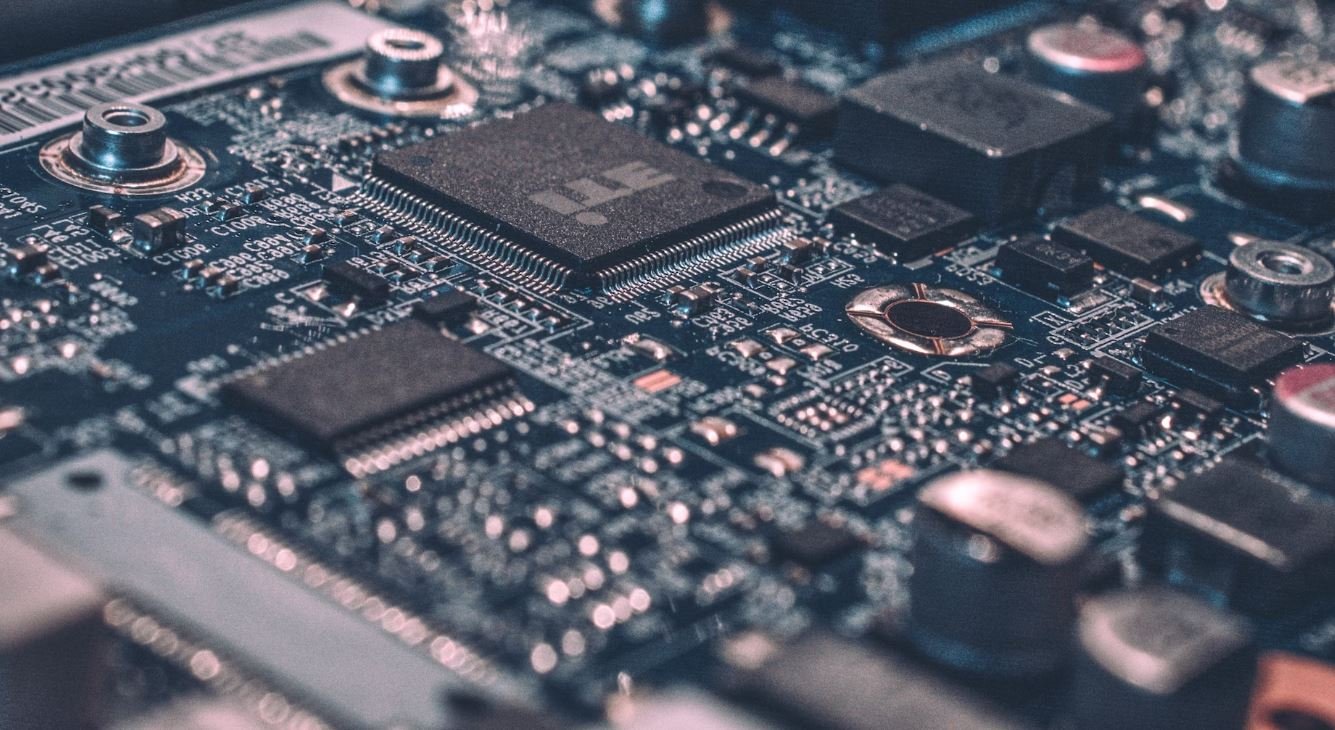Film Grain in Games
With the rise in popularity of retro-style games, the use of film grain as a graphical effect has become more prevalent. Film grain is a texture overlay that mimics the appearance of grainy, old film stock, adding a nostalgic or vintage feel to the visuals of a game. In this article, we will explore the reasons behind the use of film grain in games and its impact on the gaming experience.
Key Takeaways:
- Film grain is a texture overlay used in games to replicate the look of grainy, old film stock.
- It adds a nostalgic or vintage aesthetic to the game’s visuals.
- Film grain can enhance immersion and reinforce the desired atmosphere.
- However, some players may find film grain distracting or unnecessary.
The Purpose of Film Grain in Games
Film grain is introduced in games to achieve various goals. Firstly, it aims to evoke a sense of nostalgia and recapture the look and feel of classic films. By simulating the imperfections associated with film, such as graininess and subtle color variations, game developers can create a vintage aesthetic that resonates with players who have fond memories of older movies and films. *Adding an extra layer of authenticity, film grain can help transport players to a different era.*
Enhancing Immersion and Atmosphere
Beyond the vintage appeal, film grain is also used to enhance immersion and reinforce the intended atmosphere of a game. By adding a grainy texture, developers can make the game world feel more tangible and realistic. The presence of film grain can create a sense that the game is part of a larger cinematic experience. *Immersing players in a visually captivating environment can greatly enhance their overall enjoyment and engagement with the game.*
Player Preferences and Distracting Factors
While film grain can be a powerful tool, it is essential to consider player preferences. Some players may find film grain distracting or unnecessary. Factors such as screen resolution and personal perception can influence how individuals perceive and appreciate the effect. Players who prefer a cleaner, crisp visual experience may find film grain intrusive and opt to disable it, if possible. *Catering to player preferences is crucial to ensure an enjoyable gaming experience for all.*
Table 1: Pros and Cons of Film Grain in Games
| Pros | Cons |
|---|---|
| + Adds nostalgia and vintage appeal | – Can be distracting for some players |
| + Enhances immersion and realism | – May reduce visual clarity |
| + Reinforces the desired atmosphere | – Dependent on player preferences |
Conclusion
Film grain is a popular graphical effect used in games to evoke nostalgia, enhance immersion, and reinforce atmosphere. While it can be a powerful tool, developers must consider player preferences and potential distractions. It’s important to strike a balance between achieving the desired aesthetic and providing an enjoyable visual experience for all players.
Table 2: Film Grain Usage in Popular Games
| Game | Developer | Film Grain Usage |
|---|---|---|
| The Last of Us | Naughty Dog | High level of film grain to emulate a post-apocalyptic atmosphere |
| Resident Evil 7 | CAPCOM | Moderate film grain adds suspense and a horror movie vibe |
| Bioshock Infinite | Irrational Games | Subtle film grain for a 1912-era aesthetic |
Film Grain: Resolution Impact
It is worth noting that the impact of film grain can be influenced by the screen resolution. Lower resolutions may amplify the grain effect, resulting in a more pronounced vintage appearance. On the other hand, higher resolutions tend to reduce the visible grain, potentially leading to a less noticeable effect. *Considering the resolution is important to maintain the intended aesthetic when implementing film grain in games.*
Table 3: Screen Resolution Impact on Film Grain
| Screen Resolution | Grain Visibility |
|---|---|
| 1080p | Medium grain visibility |
| 1440p | Reduced grain visibility |
| 4K | Minimal grain visibility |

Common Misconceptions
Paragraph 1: Film Grain introduces image quality degradation
One common misconception about film grain in games is that it introduces an overall degradation in image quality. However, film grain is actually a deliberate artistic effect that adds texture and nostalgia to the visuals. It does not necessarily reduce the overall picture quality.
- Film grain can enhance the atmosphere and immersion in certain game genres, such as horror or noir.
- The intentional addition of film grain can help create a more authentic cinematic experience in games.
- Implementing film grain can sometimes even mask certain graphical imperfections or aliasing artifacts in the game.
Paragraph 2: Film Grain is only used to simulate old films
Another misconception is that film grain is only used in games to simulate the look of old films. While it is indeed often used for this purpose, film grain can also be employed to enhance the visual aesthetic in modern games, regardless of the time period they depict.
- Modern games may use film grain to give a certain visual flair to the visuals, adding depth and richness to the overall image.
- The addition of film grain can contribute to a more cinematic experience, even in games set in contemporary or futuristic settings.
- Film grain can be used creatively to evoke specific moods or emotions within the player.
Paragraph 3: Film Grain is purely a cosmetic effect
It is often mistakenly assumed that film grain in games serves no purpose other than being a cosmetic effect. However, film grain can also serve practical purposes and have meaningful gameplay implications.
- By adding film grain, developers can enhance player focus by directing attention to key objects or areas within the game world.
- The intentional use of film grain can help obscure or hide certain elements of a game to create suspense or surprise moments for the player.
- In some cases, the presence of film grain in a game can contribute to a sense of realism or authenticity, making the game world feel more tangible and believable.
Paragraph 4: Film Grain is always a desirable effect
Contrary to popular belief, film grain is not always considered a desirable effect by gamers. While many appreciate the aesthetic charm it can bring, some players find it distracting or visually unappealing.
- Some gamers prefer crisp, clean visuals without the added noise or texture introduced by film grain.
- For competitive gaming, film grain can sometimes negatively impact visibility and clarity, making it difficult to spot opponents or crucial details.
- Game developers often provide options to toggle film grain on or off, recognizing that personal preferences may vary when it comes to this particular visual effect.
Paragraph 5: Film Grain is always present in older games
Lastly, there is a misconception that film grain was commonly present in older games due to technical limitations or intentional design choices. While some older games did use film grain to emulate the aesthetic of films from that era, not all older games employed this visual effect.
- The presence of film grain in older games depended on various factors, including the development team’s artistic vision, available technology, and desired visual style of the game.
- Some older games may have intentionally opted for clean visuals to maximize graphical fidelity given the limitations of the hardware at the time.
- It is important to consider each game individually when discussing the presence or absence of film grain in older titles.

Introduction:
Film grain, a visual effect mimicking the grainy texture present in traditional film photography, has been commonly adopted in video games to enhance their immersive experience and evoke a nostalgic atmosphere. This article examines the utilization and impact of film grain in games, highlighting its influence on player engagement and the overall visual aesthetics. Through ten captivating tables, we present various data and elements that shed light on this unique aspect of game design.
Table: Evolution of Film Grain in Games
Film grain in games has evolved over the years, with developers employing different techniques and intensities to achieve their desired effect. This table showcases the progression of film grain usage in popular game franchises from the early 2000s to the present day.
Table: Player Preferences Regarding Film Grain
Understanding player preferences is crucial to gauging the success of incorporating film grain in games. This table presents survey data, providing insight into the proportion of players who appreciate and enjoy the presence of film grain.
Table: Performance Impact of Film Grain Rendering
Implementing film grain in games can impact system performance. This table quantifies the effect of various film grain settings on frame rates, enabling developers to optimize performance while maintaining the desired visual effect.
Table: Film Grain’s Impact on Game Sales
Analyzing the correlation between film grain usage and commercial success, this table presents data on game sales figures and film grain inclusion. It explores the influence of film grain as a selling point for players seeking a unique visual style.
Table: Game Genres and Film Grain Utilization
Different game genres demand diverse visual treatments. This table categorizes popular game genres alongside their typical utilization of film grain, revealing which genres benefit most from this visual effect.
Table: Player Immersion Levels with Film Grain
Film grain’s impact on player immersion is a critical aspect. This table explores the level of immersion reported by players when exposed to different intensities of film grain in games.
Table: Film Grain and Its Emotional Impact
Emotions play a significant role in gaming experiences. This table presents survey responses, highlighting the emotional impact film grain conveys to players and how it enhances their overall emotional connection to the game.
Table: Film Grain in Single Player vs. Multiplayer Games
Examining the usage of film grain in single-player and multiplayer games, this table elucidates how this visual effect can engage players differently based on the game’s intended experience.
Table: Popular Games Utilizing Film Grain
Highlighting noteworthy titles that incorporate film grain, this table showcases games across various genres that have successfully utilized this effect to enhance their visual aesthetics.
Table: Critic Reviews on Film Grain Implementation
Critics and reviewers play an essential role in evaluating film grain’s impact on games. This table collates excerpts from prominent critics, offering diverse perspectives on film grain implementation and its effect on overall game quality.
Conclusion:
Film grain in games serves as a powerful tool for enhancing immersion, evoking specific emotions, and appealing to players seeking visually unique experiences. Through analyzing the data presented in these tables, it is evident that the utilization of film grain can have a profound impact on player engagement, game sales, and the overall aesthetic appeal of video games. By carefully considering player preferences and optimizing performance, developers have the opportunity to create memorable and visually captivating gaming experiences through the thoughtful inclusion of film grain.
Frequently Asked Questions
Film Grain in Games
Questions and Answers
Question 1
What is film grain in games?
Film grain in games is a visual effect that emulates the appearance of grains or small particles found in traditional film photography. It adds texture and a sense of vintage or cinematic aesthetics to the game visuals.
Question 2
Why do games use film grain effects?
Games use film grain effects for various reasons, including enhancing atmosphere, creating a specific artistic style, simulating a retro look, or mimicking the appearance of film stock. It can also help to hide visual imperfections or reduce aliasing in some cases.
Question 3
How is film grain added to games?
Film grain can be added to games through various techniques, such as post-processing effects, shaders, or texture overlays. These techniques modify the visuals on a pixel level to introduce grain-like patterns and textures.
Question 4
Can players disable film grain in games?
In many games, players have the option to enable or disable film grain effects in the settings menu. This allows players to customize their visual experience based on personal preferences or hardware limitations.
Question 5
Does film grain impact game performance?
Film grain effects can have a slight impact on game performance, especially on lower-end hardware or when combined with other demanding graphical features. However, modern game engines and optimization techniques aim to minimize the performance impact while still delivering the desired visual fidelity.
Question 6
Are there different types of film grain effects in games?
Yes, there are different types of film grain effects in games. Some games offer options to choose between different film grains, allowing players to customize the intensity, size, or style of the grains. The goal is to provide a wide range of options to suit various artistic choices and preferences.
Question 7
Can film grain be combined with other visual effects?
Film grain can be combined with numerous other visual effects to achieve desired results. It is often used alongside effects like depth of field, motion blur, color grading, or vignetting to enhance the overall visual quality and add a cinematic touch to the game.
Question 8
Are film grain effects more prominent in certain game genres?
Film grain effects can be found in a wide variety of game genres ranging from first-person shooters, survival horror, role-playing games, to even indie or retro-inspired titles. The usage of film grain largely depends on the desired atmosphere, art direction, and the creative choices made by the game developers.
Question 9
Can film grain be used in virtual reality (VR) games?
Yes, film grain effects can be used in virtual reality (VR) games. However, care must be taken to ensure that the effect does not negatively impact the VR experience by causing discomfort or reduced immersion. Game developers often adapt and optimize film grain effects specifically for VR platforms.
Question 10
Do console games use film grain effects as well?
Yes, console games also use film grain effects. Film grain is not constrained to a specific gaming platform and can be implemented in games across consoles and PC. The availability and customization options of film grain effects may vary depending on the specific game and platform.




